Time passes so quickly when we are having fun, and spending time with Clay Zhang and New Year Prints was the most fun we’ve ever had at Guwenhua. Before we knew it, the sun was already dropping low, already behind the buildings that tower over and close in the ancient street. We were fast running out of time to see the temple at the centre of Guwenhua.
In twenty years, we have passed by many times before but never entered. Our (then) little boys came for the sweets and protested loudly that temples are boring. Little kids are free with their displeasure when they are bored. Now they are older, we can negotiate and reach an accord, because this is not a boring temple at all, it is in fact dedicated to Mazu, the Goddess of the Sea. The same Mazu that we were introduced to in Quanzhou (link).
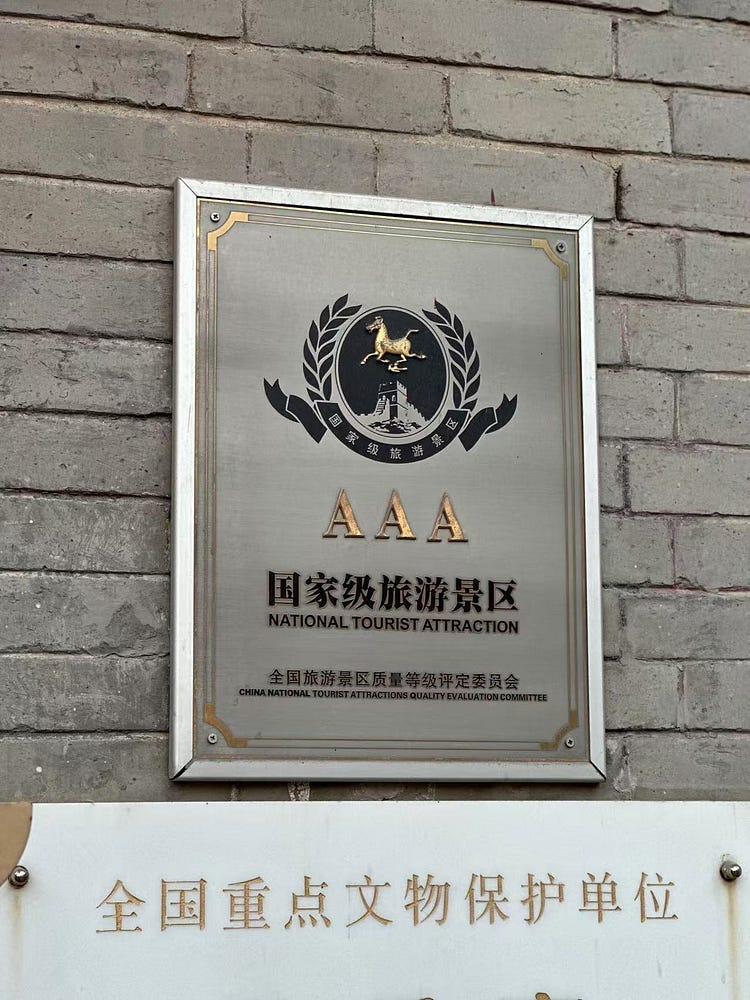
As we realized the time and hurried over to the entrance, we saw that the gate closes at 5pm. The sun had mostly set, the temple buildings were now mostly in shadow. We had thirty minutes for a speed run.
The Mazu Temple of Tianjin is designated 3A and is larger than one would think. Never a single towering structure, temples are a collection of smaller buildings, pavilions, grounds and gardens. A self sufficient world with clear boundaries, like a small bubble community within the larger society. I always feel like one could go into these places and not need to come out for a long time, a feeling I never get in a western church. A spiritual fortress, self sufficient, and stocked against sieges.
Shared or fought over, integrated or independent from both Daoism and Buddhism, the real Mazu began life as a historical person who lived around Quanzhou and died in 987. She was known for her compassion and healing proficiency at a young age, dying tragically during a storm while rescuing sailors from a shipwreck. Her star rose quickly and by 1156 she was officially recognized as a goddess and religious figure.
The temple here in Tianjin is called the Queen of Heaven Palace, or Niangniang Palace. It dates to 1326 and has been expanded and repaired many times since. What we see today is an active and prosperous site where ceremonies are performed primarily for safe sea navigation. Mazu is the Goddess of the Sea, so her temples will typically be found in coastal areas.
I am as clueless as ever as to the identities of the characters and deities at the centre of these pavilions. How they came to be, what they represent, their stances, weapons, and accoutrements are a near-total mystery to me. Years will pass before I reach the texts or make the connections that will be able to explain patiently to a novice such as myself. For now, I can only relate to what I know.
I know man has always strived for the perfect form, and if he cannot have perfection, he will settle for being jacked. I notice this before all else, that these guys are muscled and ripped! Abs and forearms with this definition and separation?! What I wouldn’t give to look a bit like this (minus the skin tone). My wife finds this absurd. “Only guys notice other guy’s muscles…”
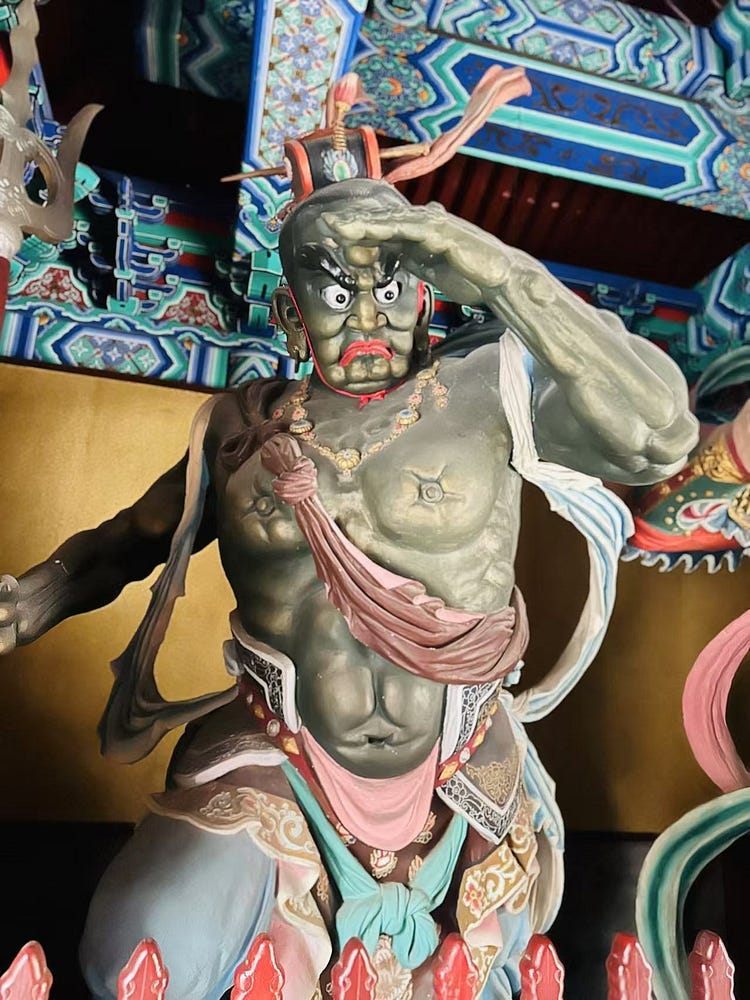
This is a new wrinkle, a fully automated vending machine for blessings controlled by app. We do not think we’ve seen this before (and since writing and visiting other places still have not). You scan the code, provide your name, select your blessing from the menu provided, and the duration, and et voilà! Your name will show up on the little display, and you get a digital gold certificate.
We lingered for as long as we could, but we didn’t see our name show up. 😔 We trust in the spirit and technology to do right by us.
I believe the image directly above is Mazu herself, but who the other three are, neither of us could say. There is so much potential to learn, and I keep finding myself saying this and starting, just starting, to get self-conscious about it. It is not quite enough to appreciate the art without more knowledge of the subject, the artists meaning and intention, and even the techniques used. I believe this feeling is going to be with me for a long time.
Anyway, besides that, I’ve picked up a new habit — stamp collecting! We were noticing on these trips, places like Dufu’s Cottage, XiJie Culture Street, the Imperial Kiln Museum, and many others, visitors collecting these stamps to remember their visit. That idea works for us too, so I’ve got a suitably charming notebook that I will be aiming to fill with neat stamps from as many of our visits as possible.
Approaching the back of the complex, nearly reaching what could only be the retail point, there are on both sides these long painted tile murals of what has to be depictions of the old port and temple back in the days of masted ships. I’m so sorry, there was no description and we were being reminded politely by security that closing time was fast approaching! The work invested in these is what makes these places special.

There was one informational sign on the mural above talking about the Tianhou (Mazu) Temple flag pole. While a bit hard to understand, the English is confusing, the old flagpole was 26 meters high, so it must have been visible a ways off. In September 2018, the flag pole was removed to preserve it? The details are unclear, whether the description is of the replica in place now or the piece remaining to be preserved. I didn't think to look for the flagpole or remember anything being there. Oh well, another reason to return to Guwenhua.
And finally, to the shop, which was on the verge of closing but the staff humoured us while they prepared to go home for the day. This shop integrated explanations of customs and Mazu traditions, so we learned little factoids such as fishermen don’t go out fishing on Mazu’s birthday so they and the fish can celebrate for a day.
You might find this odd of me, but I can’t help noticing that every temple we visit does the same things but does them differently. All have retail, and some of the goods are the same, but the pricing, presentation, and locations are all different. The plethora of ways to donate and submit prayers is also widely different from place to place. The social media and marketing is never the same from temple to temple. Of course, Mazu is independent from Buddhist or Daoist places, but all are different from the others.
This is my corporate demon rearing his ugly head. He’s wondering where the “governing body” is that would standardize and drive efficiencies in supply chains and vendor selection, and a chief marketing officer to standardize the messaging. *shudder*

We left with a new appreciation for Guwenhua. We will return to see a Xiangsheng show (相声) and, I am very excited about this, we discovered a six generation shop for snuff bottles (鼻烟壶) that has been on my list for a long time (link). Exhausted but with curiosity satisfied, we joined the sales people and security as they closed the gates on the Queen of Heaven for another day.




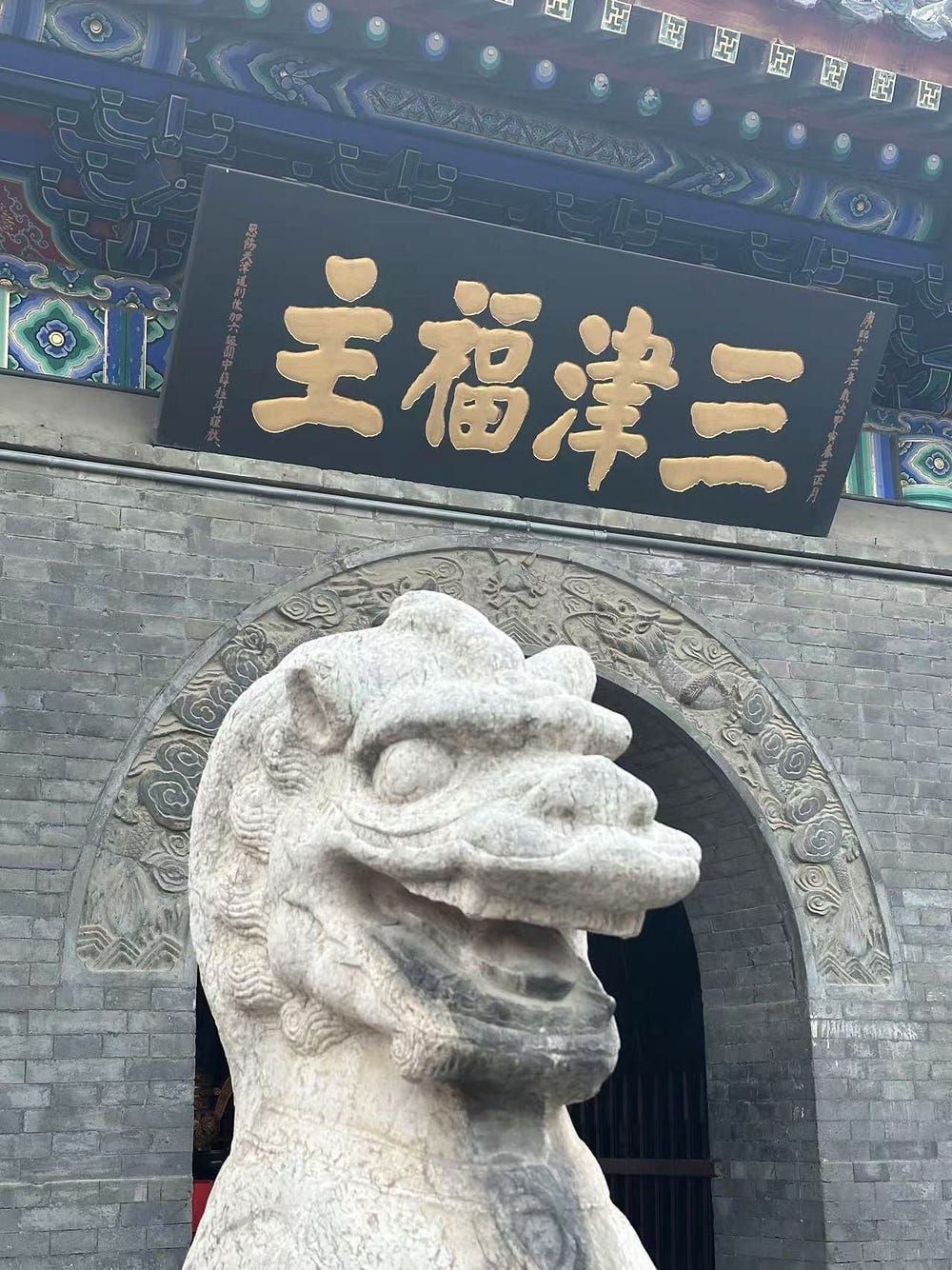



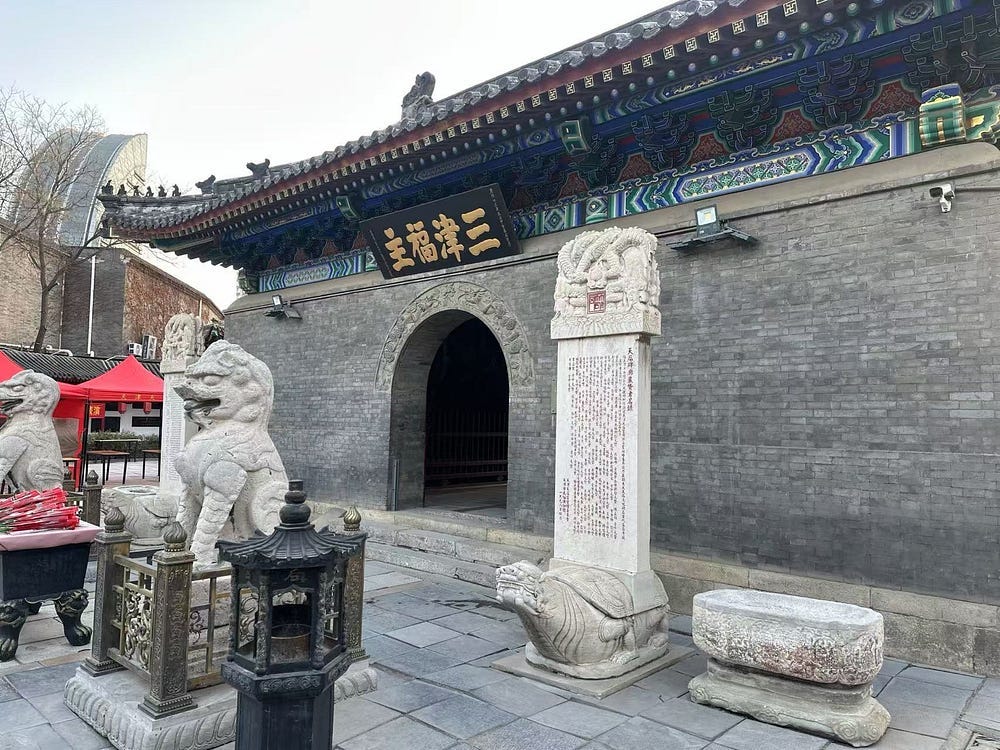
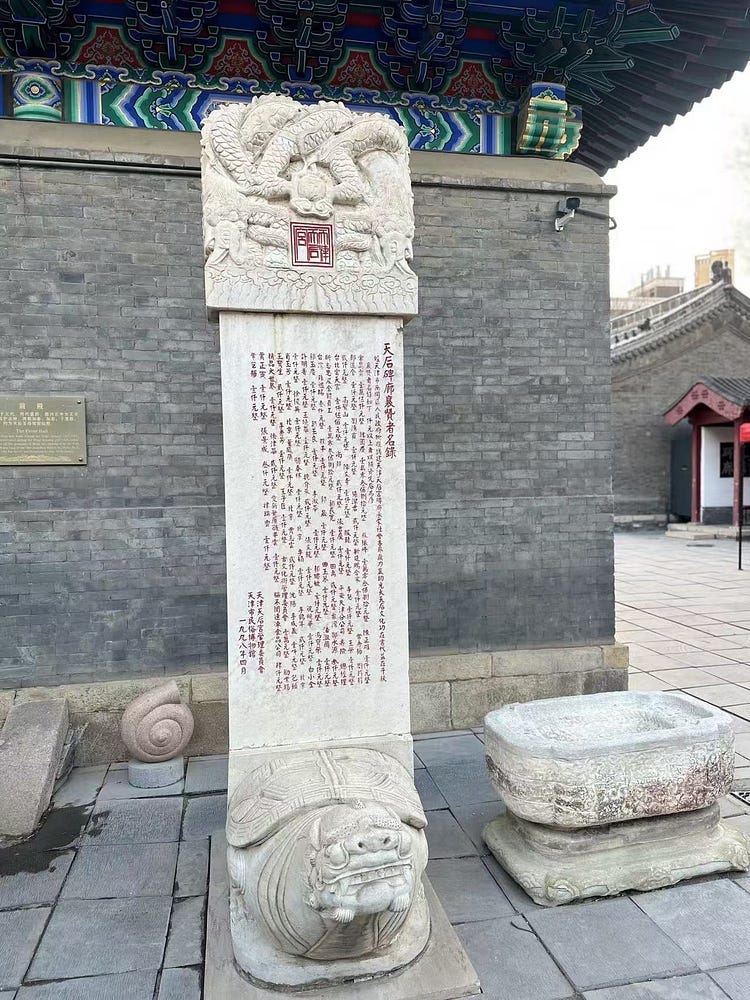
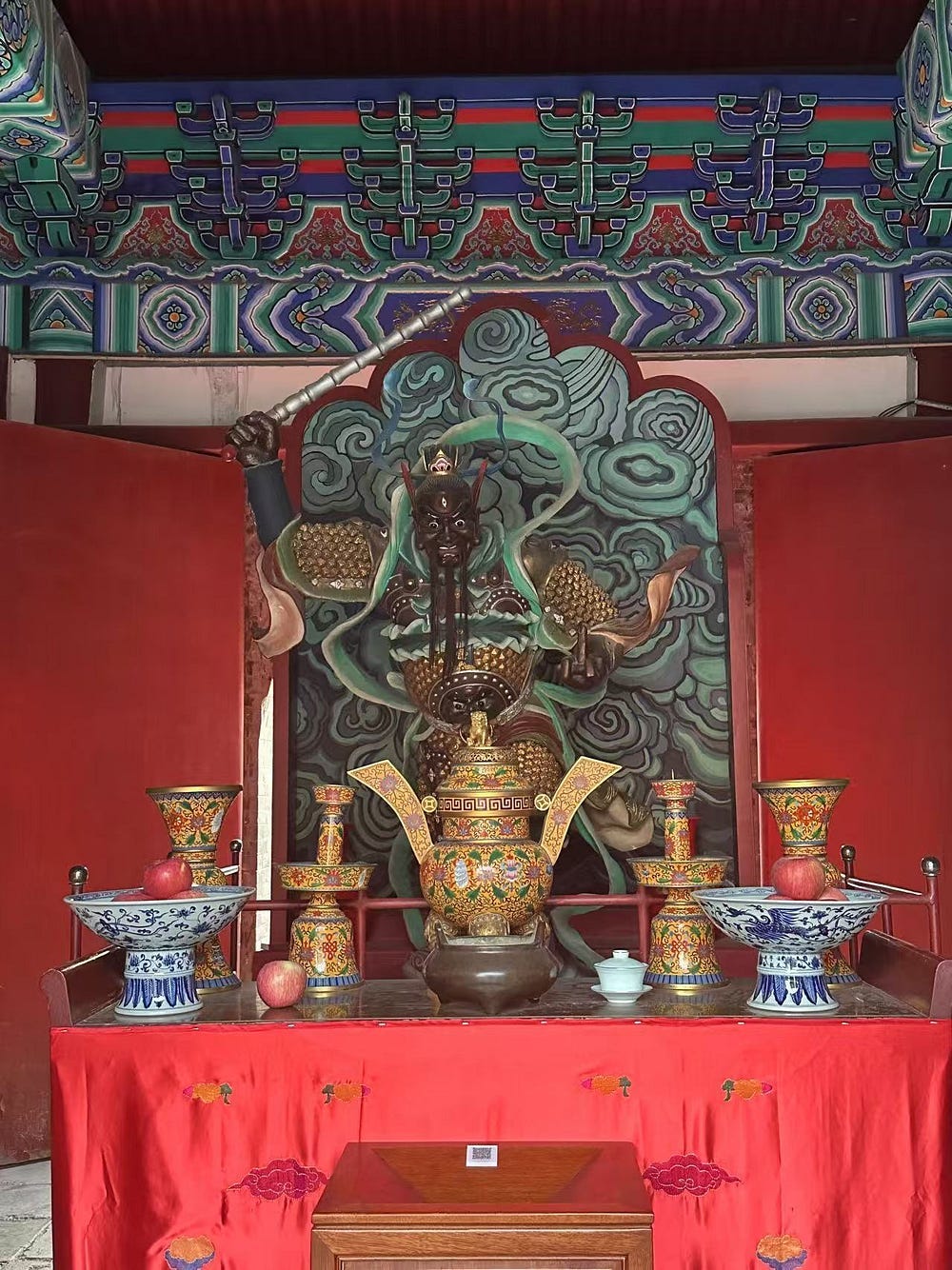


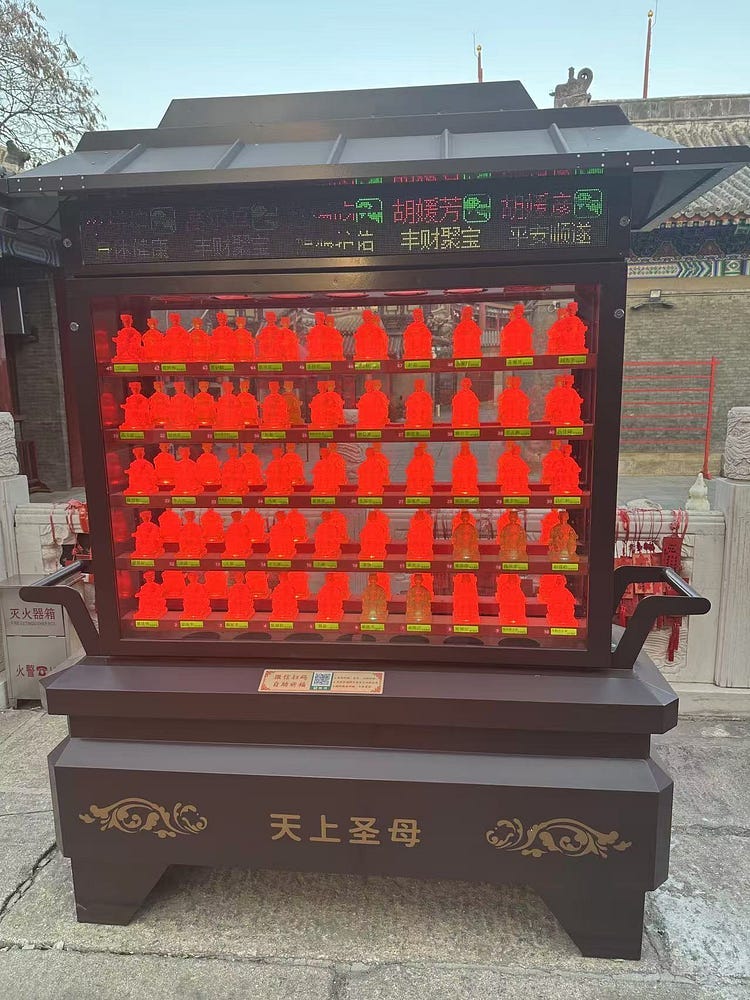






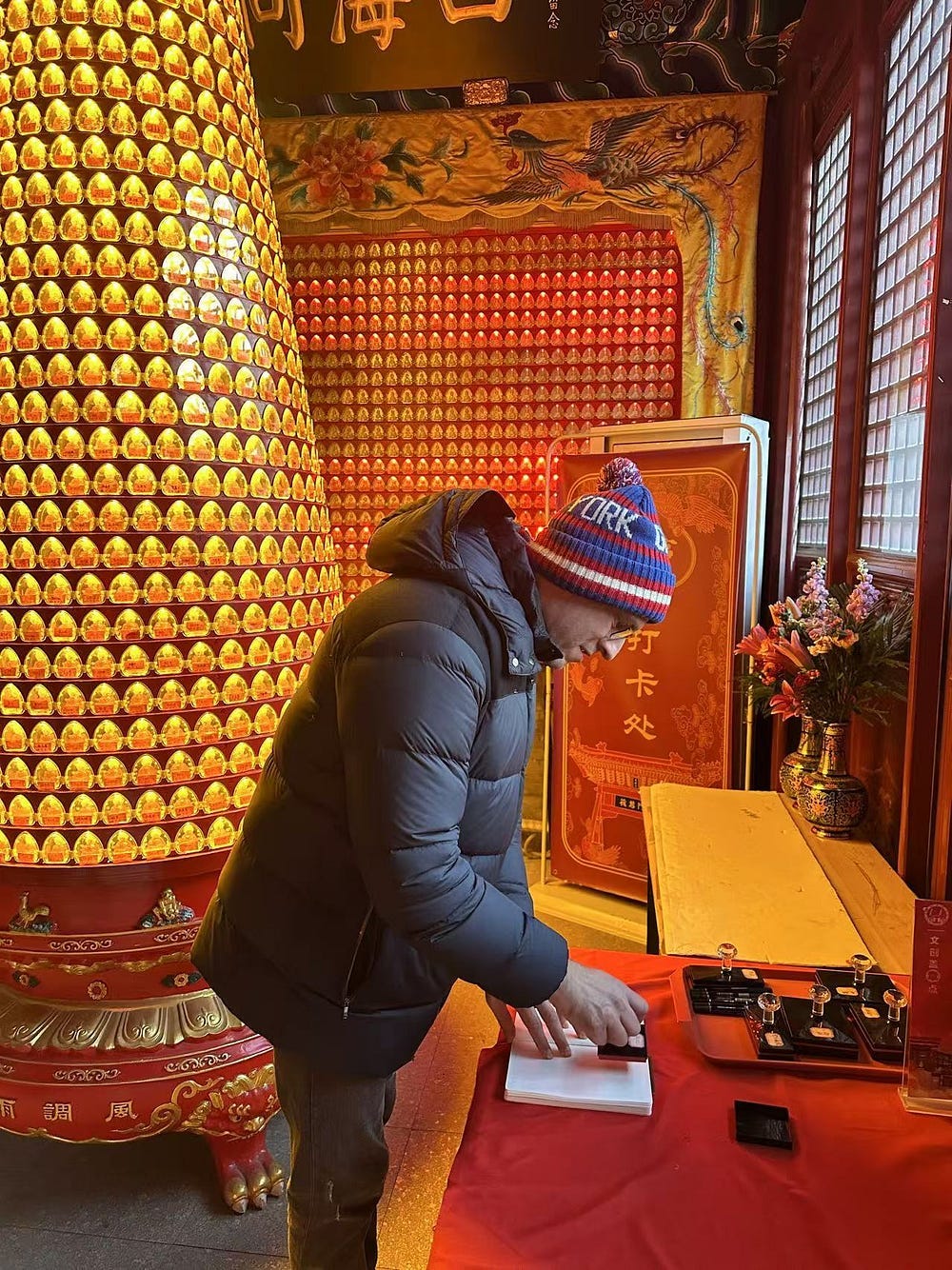
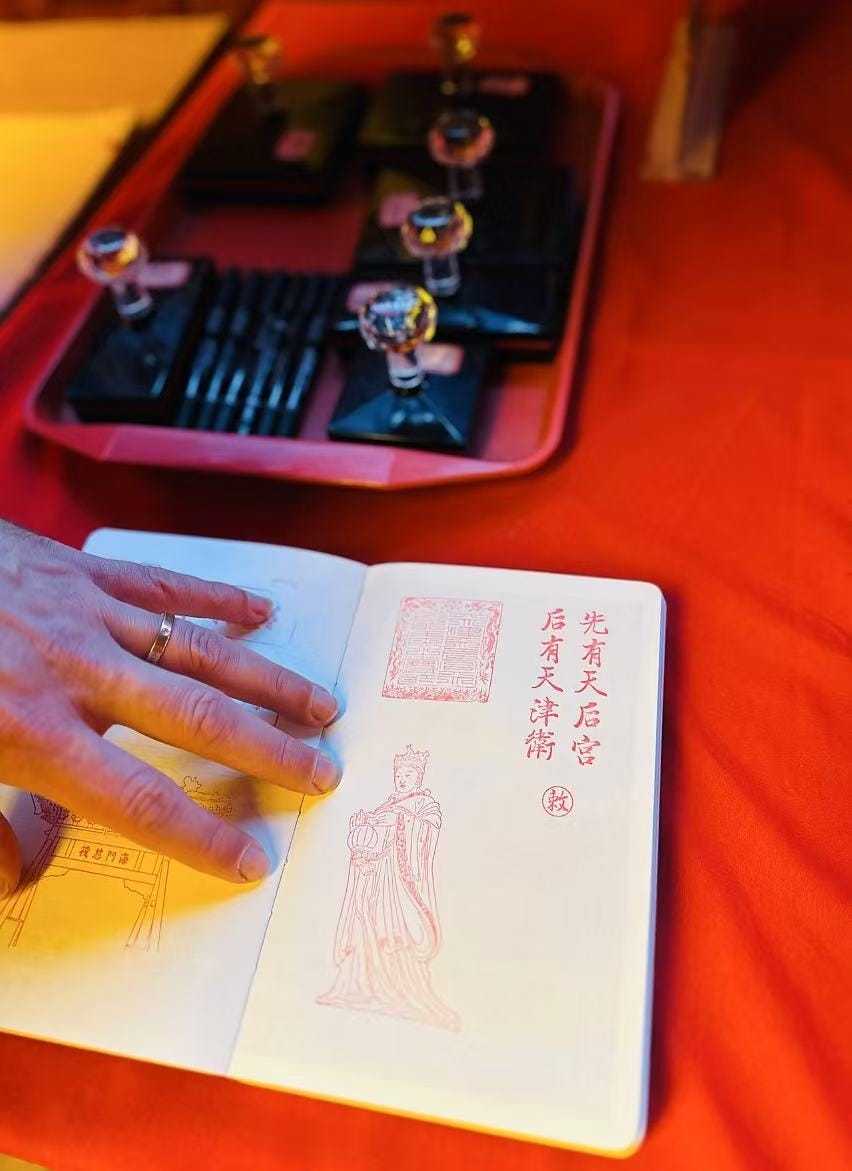



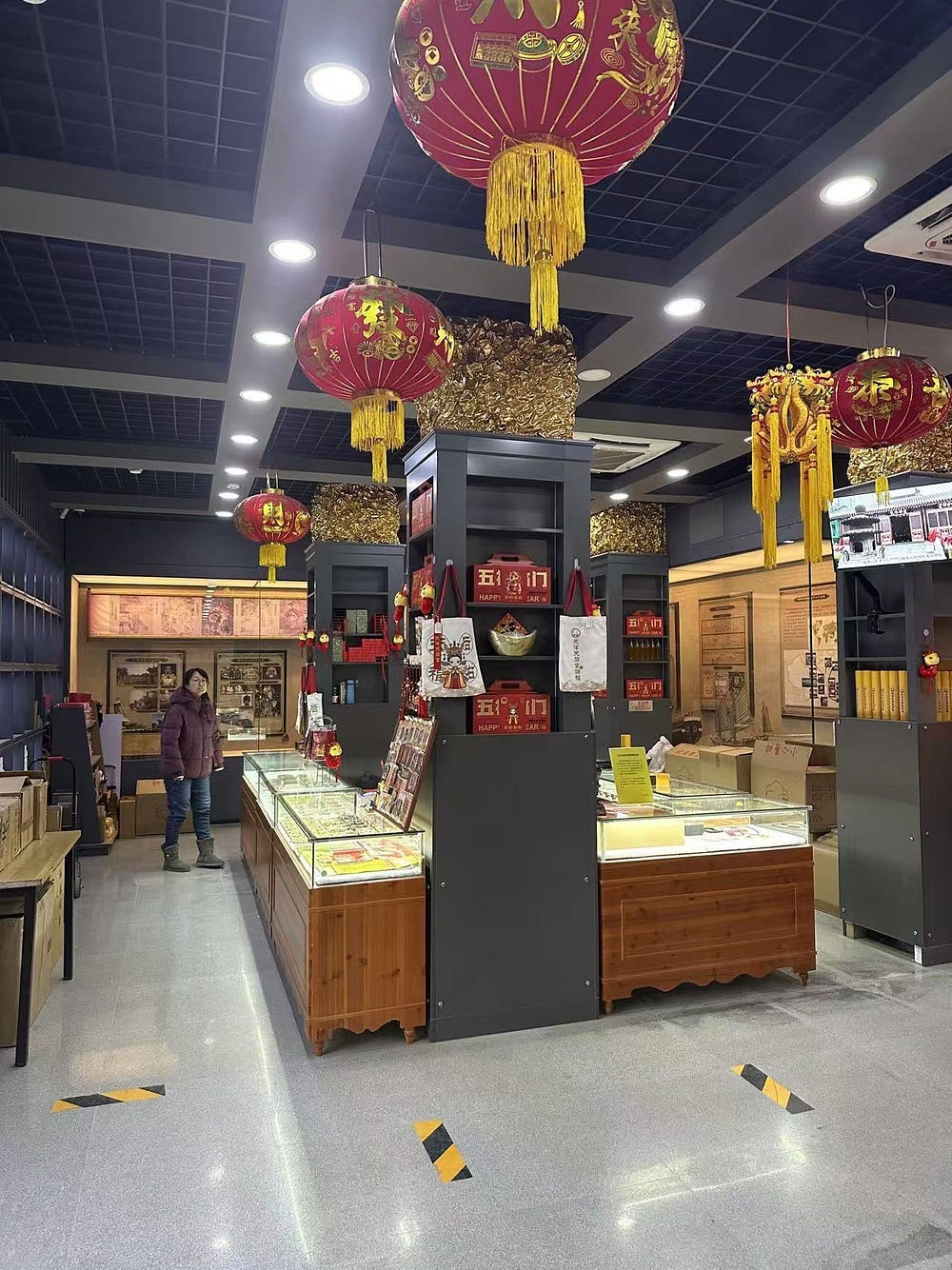



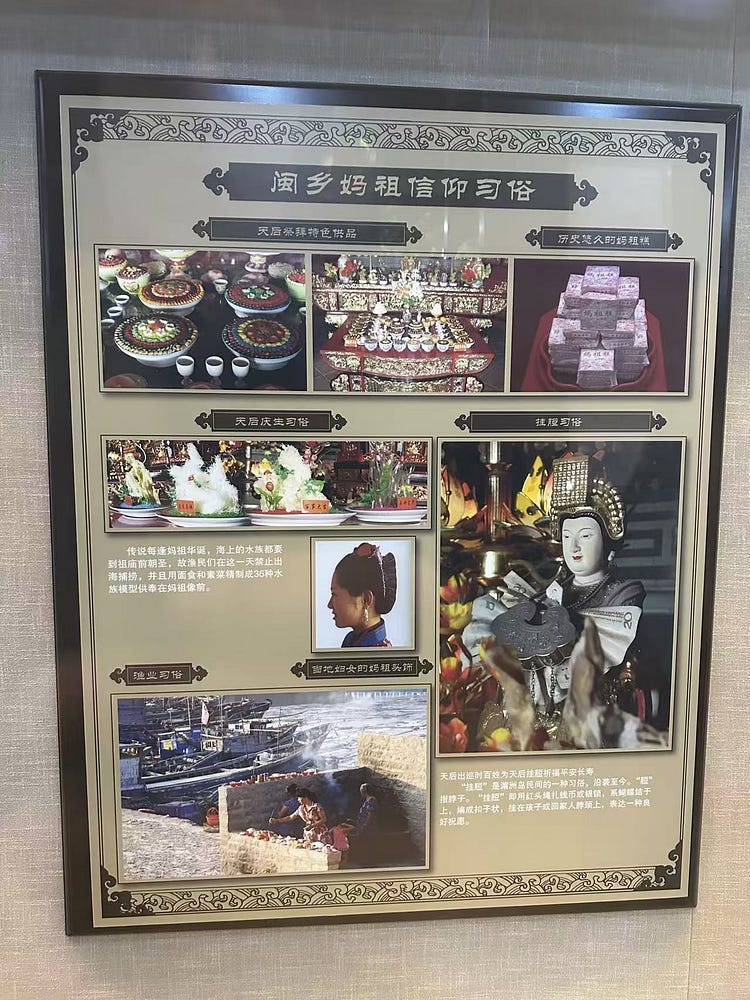
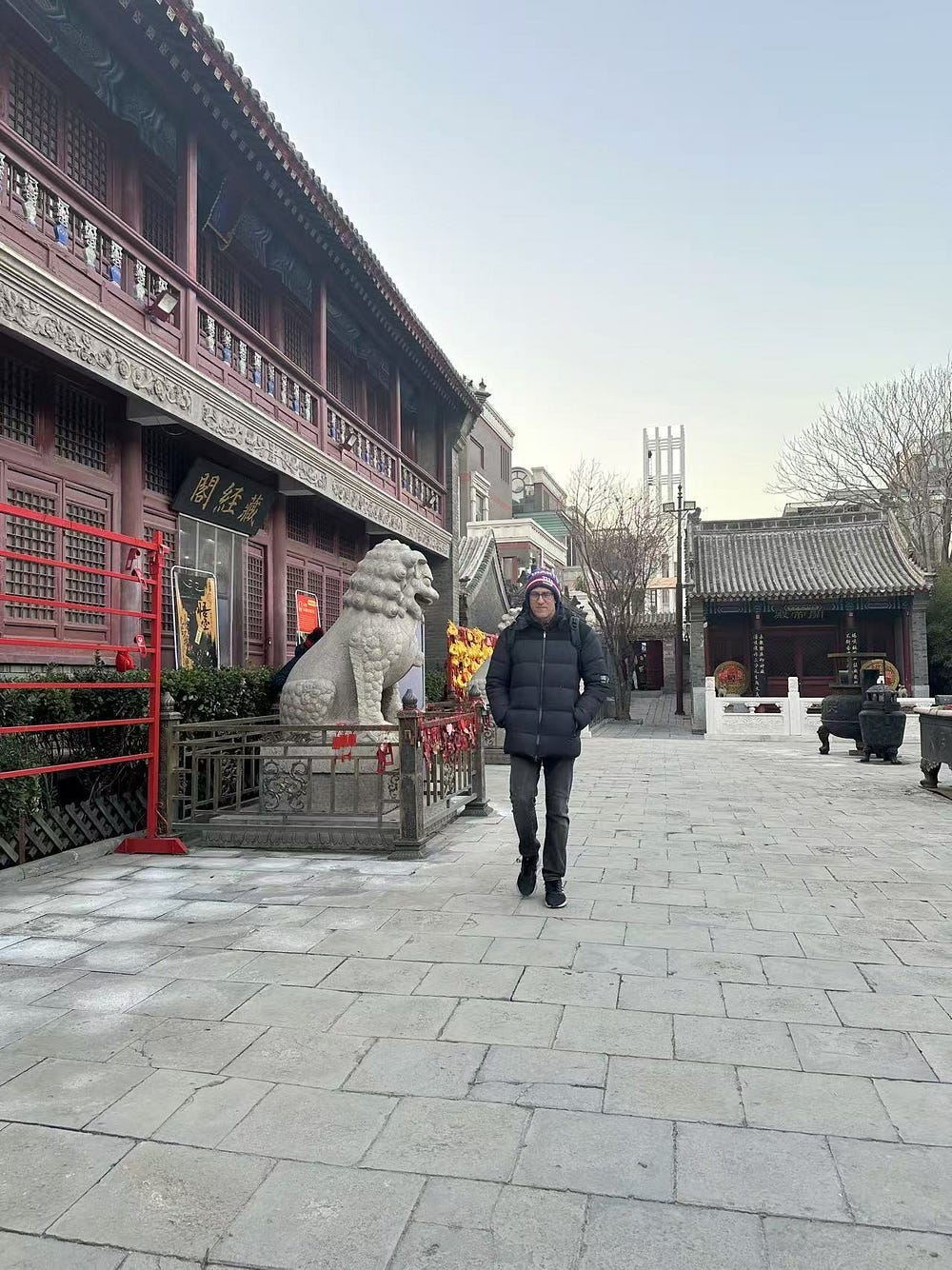
A lovely post about the Tianhou, or Mazu temple, Paul. I always get so nostalgic when I read your Tianjin posts. I was there, before it was jazzed up and digitalized. It's crazy how so many temples have digital blessings, digital fortune-telling, digital everything these days. The photos of the murals on white tiles are particularly gorgeous!!